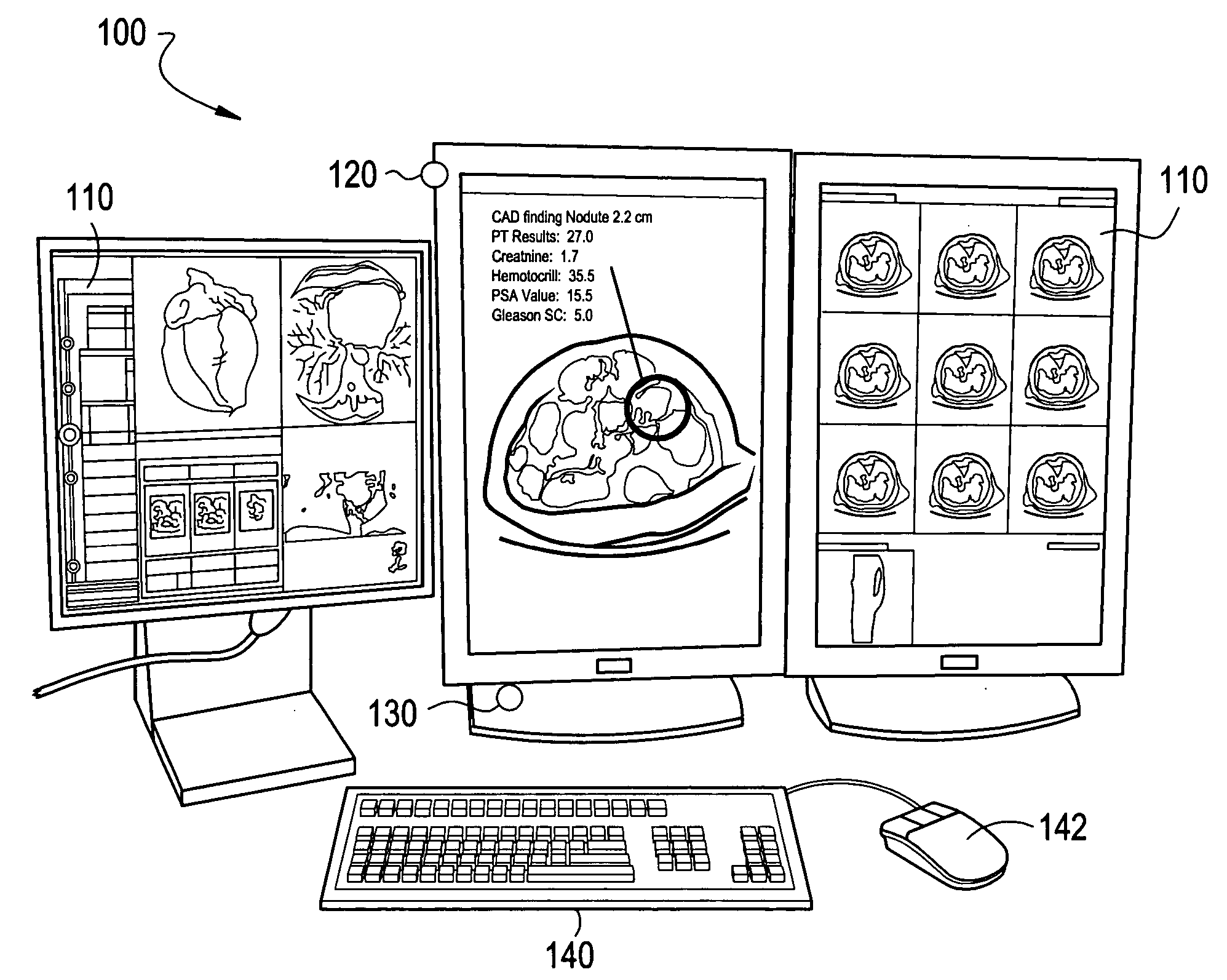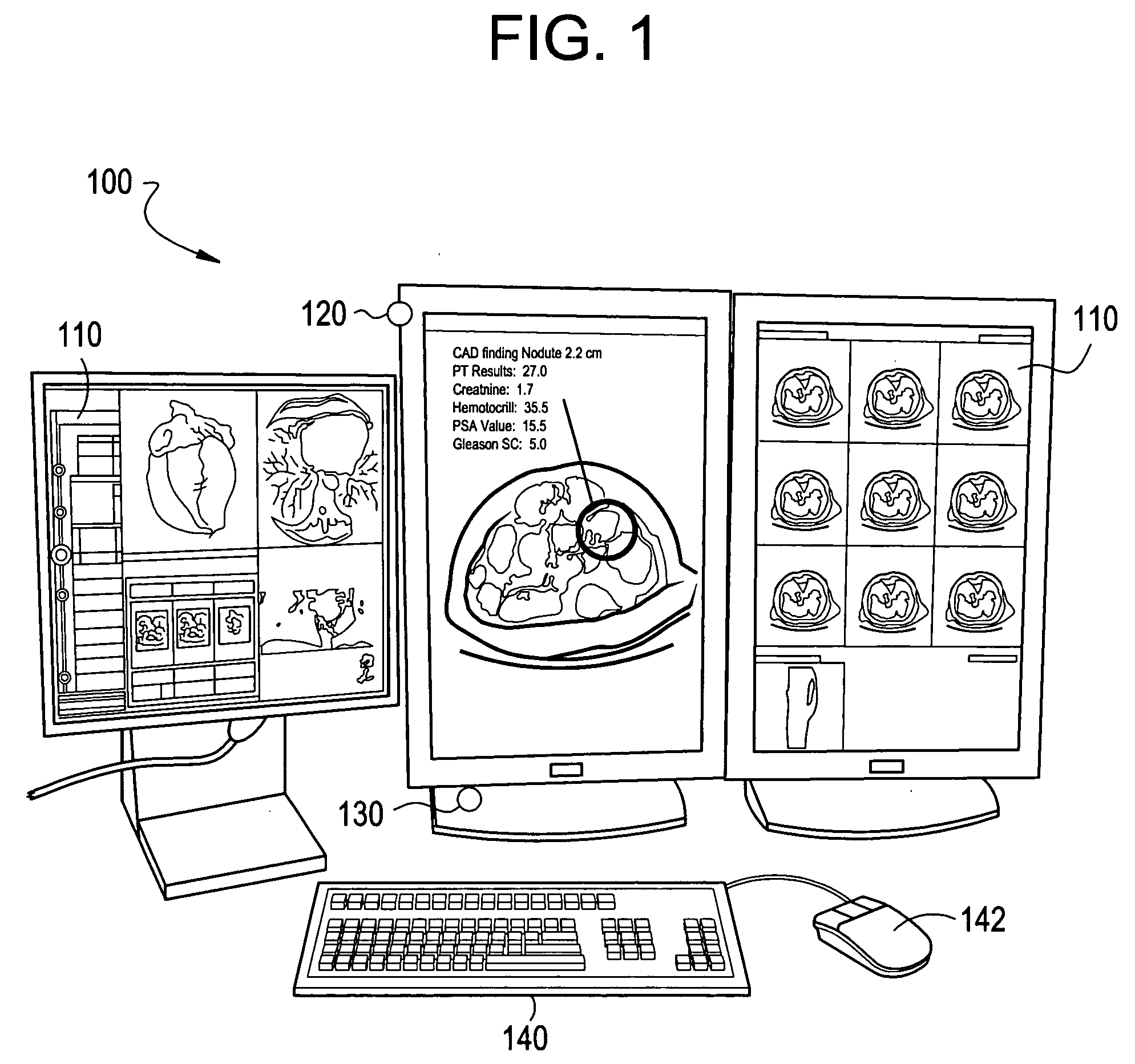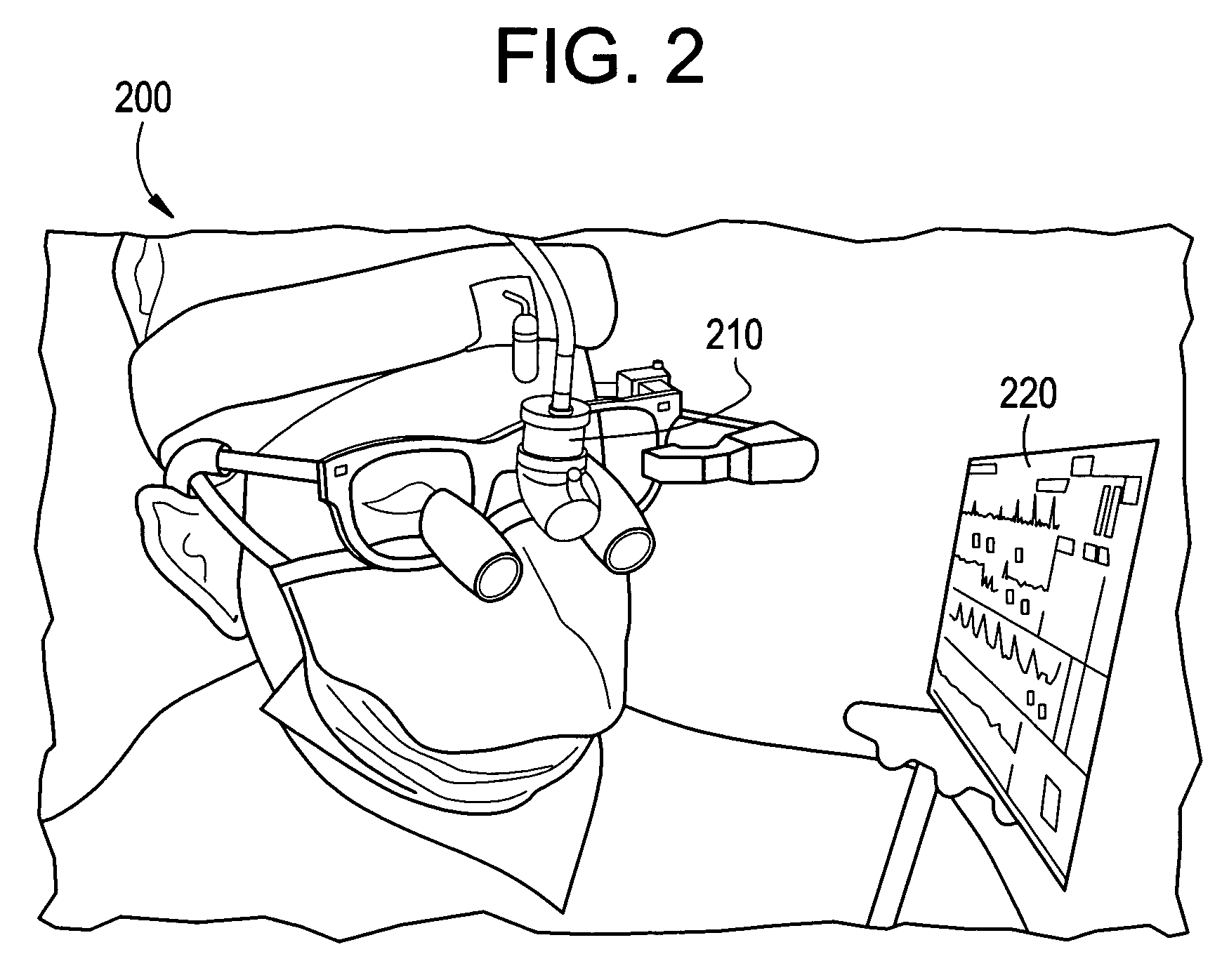System and method for presentation of enterprise, clinical, and decision support information utilizing eye tracking navigation
a technology of decision support information and eye tracking, applied in the field of information display in the healthcare environment, can solve the problems of affecting the work efficiency of health care personnel, affecting the performance of medical personnel, and affecting the quality of life of patients, so as to achieve the effect of improving information display
- Summary
- Abstract
- Description
- Claims
- Application Information
AI Technical Summary
Benefits of technology
Problems solved by technology
Method used
Image
Examples
Embodiment Construction
[0036]FIG. 1 illustrates an improved display system 100 for selecting and displaying information in accordance with an embodiment of the present invention. The system 100 includes a display 110, a motion tracking device 120, microphone 130, and manual input devices 140, 142. The components of the system 100 may communicate via wired, wireless and / or infrared communication, for example. The components of the system 100 may be implemented separately and / or integrated in various forms, for example.
[0037] As shown in FIG. 1, one or more simple display devices 110 may be used to display information to a user. The display 110 may be used with a portable eyewear and eye tracking system, such as a gaze tracking system including the motion tracking device 120, to display information for one or more users. By tracking where a user is focusing or fixating his or her visual attention, an accurate measure of user intent may be inferred. Eye or gaze tracking may be faster and more efficient than...
PUM
 Login to View More
Login to View More Abstract
Description
Claims
Application Information
 Login to View More
Login to View More - R&D
- Intellectual Property
- Life Sciences
- Materials
- Tech Scout
- Unparalleled Data Quality
- Higher Quality Content
- 60% Fewer Hallucinations
Browse by: Latest US Patents, China's latest patents, Technical Efficacy Thesaurus, Application Domain, Technology Topic, Popular Technical Reports.
© 2025 PatSnap. All rights reserved.Legal|Privacy policy|Modern Slavery Act Transparency Statement|Sitemap|About US| Contact US: help@patsnap.com



